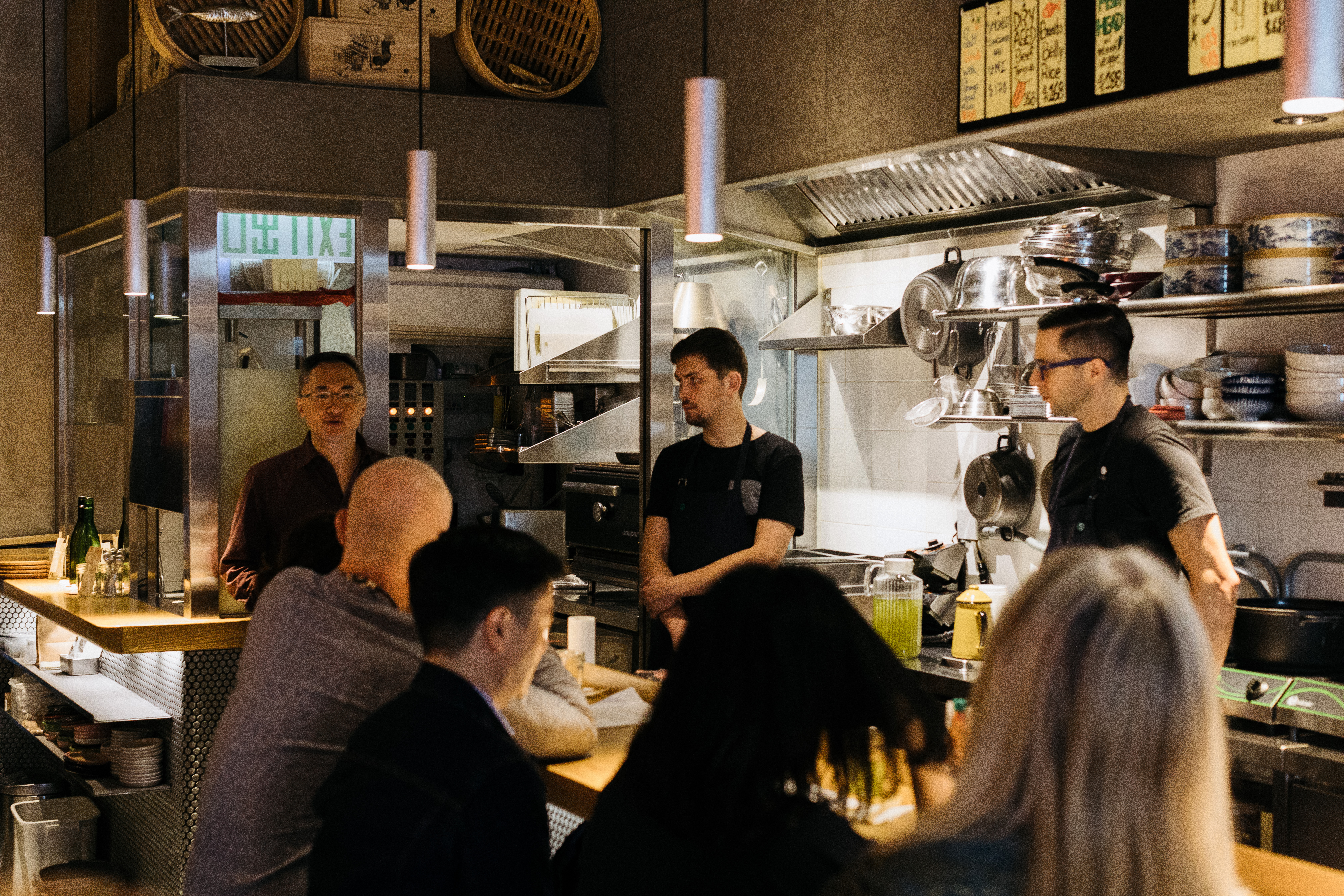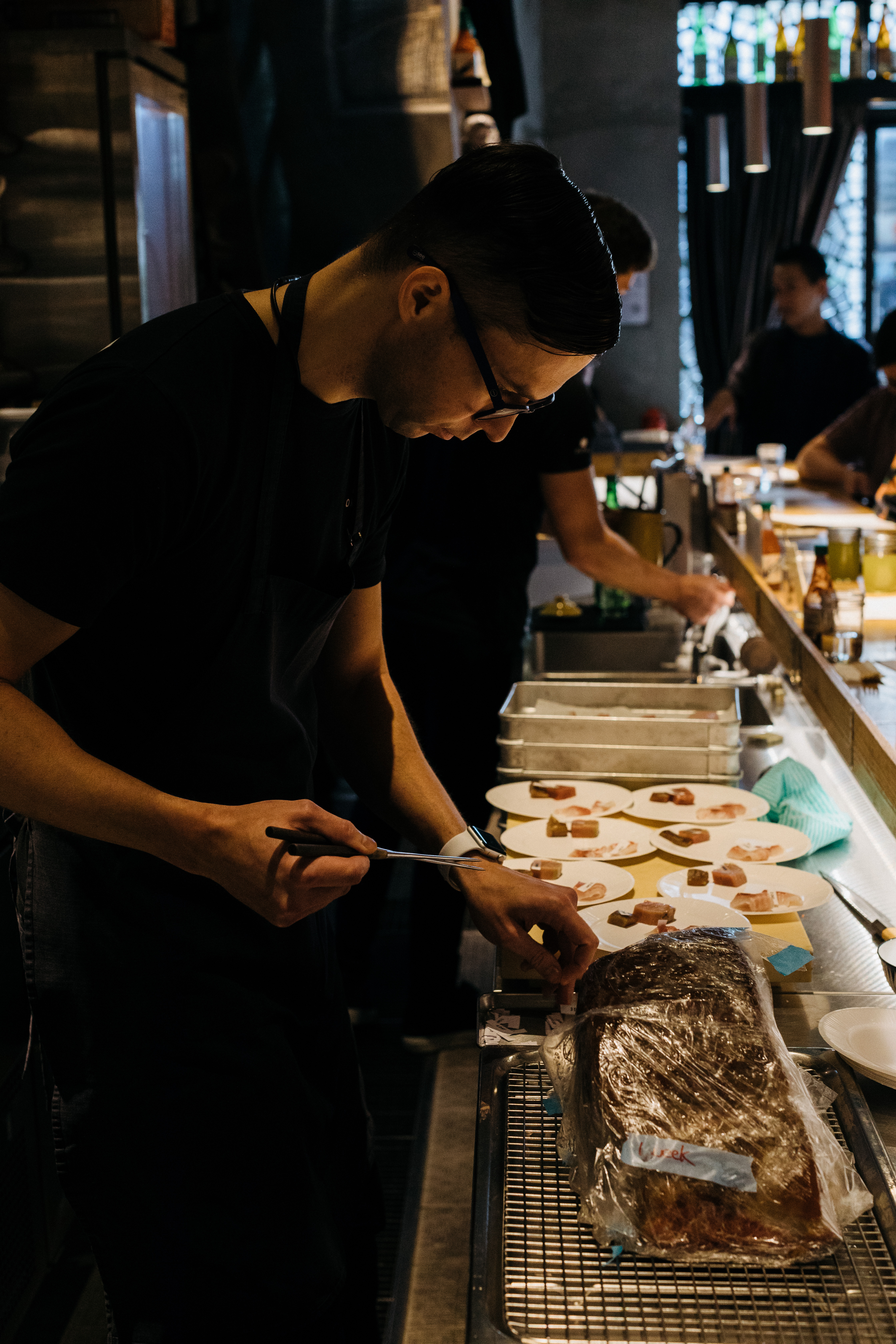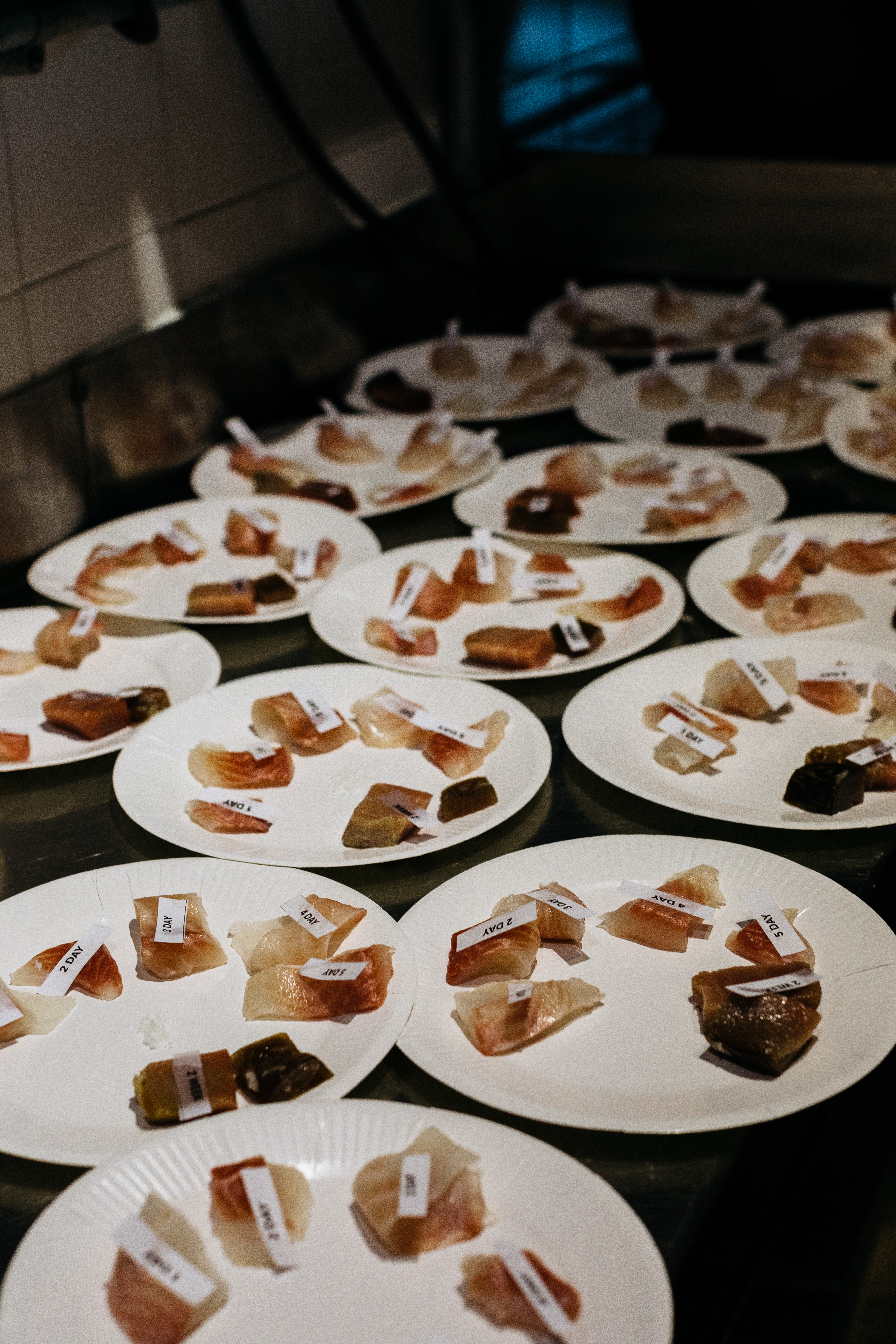Encore: Fish Ageing Lunch Presentation with Max Levy
By Mina Park

For all of us who assume that raw fish has to be fresh to be good, Chef Max Levy has something to teach us. On 2 December 2017, Slow Food Hong Kong arranged for Chef Levy to teach us a thing or two on dry ageing fish. Slow Food Hong Kong and Chef Levy held a similar event earlier this year, and it was so popular that the people clamoured for more. Even at this second event, it was standing room-only at the venue, Chef Levy’s Sai Ying Pun restaurant, Okra. The guests included the city’s die-hard foodies.
I have been a long time fan of Okra and Chef Levy’s Japanese food. Okra is a wonderfully true reflection of Chef Levy’s personality, with New Orleans Crystal hot sauce on the sushi counter, Japanese and American toys lining the shelves by the entrance, old school heavy metal blasting on the speakers, and a laser-shop focus on the ingredients served. My favourite dish at Okra is the sampler of aged tuna, so I was looking forward to learning more about how he prepares the fish.

Chef Levy does not like to serve fresh fish. Having trained in the Japanese tradition but then having moved to Beijing to open his first restaurant, he was initially surprised by the Chinese preference for freshly killed fish, and saw live fish tanks at restaurants for the first time. In contrast, Japanese restaurants typically dry-age the fish they serve, which is also what he does at Okra.
The process of dry-ageing does two important things for fish. First, dry-ageing deepens the flavour of the fish because glutamate is released, thus creating more of that revered umami. Chef Levy goes on a minor but fascinating tangent about MSG, noting that glutamate exists in everything we eat and isn’t the unnatural villain it’s portrayed as. MSG is essentially one part glutamate and two parts salt (to stablisize the glutamate). However, glutamate masks the flavour of salt, so usually more salt is added to dishes to compensate. He attributes the sickness that some people attribute to MSG to nothing more than excessive dehydration. In short, people shouldn’t be too afraid of MSG. By dry-ageing fish, one could says he’s bringing out the MSG flavours inherent in the fish.

Second, dry-ageing changes the consistency of the flesh because water content is reduced and the flesh is tenderised because enzymes break down the flesh over time. If a fish is aged for too long, it can become quite soft. We got to see for ourselves how fish changes over time through dry-ageing.

Chef Levy prepared for each guest a plate of ishigaki dai (or wolf-beaked perch) that had been aged for different periods of time – 1 day, 2 days, 3 days, 5 days. He also gave us a sample of tuna that had been aged for two weeks. He prefers to age white fish and tuna over fattier fishes like mackerel, because the aging process is more stable and the fish is less likely to go rancid.
He emphasises repeatedly that hygiene is a key concern when ageing fish. He uses a special industrial paper made specifically for drying fish and meat that is made of two layers of film to allow the moisture to wick away from the flesh and let it breathe. The film also ensures that harmful microbials aren’t trapped. It’s always reassuring to hear that a chef is extremely focused on making sure his customers don’t get sick from eating raw fish!

After the tasting, the group voted by a show of hands on their favourite duration of ageing of the ishigaki dai. People were enjoying themselves and the tasting so much, I think some people voted for everything. In the end, it looks like the three-day aged fish was the crowd favourite. This also happens to be Chef Levy’s preferred age to serve this fish, finding the 5-day fish too soft.
The afternoon ended with bowls of Okra’s soul-satisfying Thanksgiving gumbo and sake for some. It was a wonderful way to spend a Saturday afternoon, among like-minded people passionate bout food. There’s so much to write about dry-ageing. Chef Levy is a fount of knowledge, having done so much research over the years. The best way to learn more is definitely to go to the restaurant and ask him directly, or for Slow Food Hong Kong to do a third instalment next year? Happy holidays, everyone!